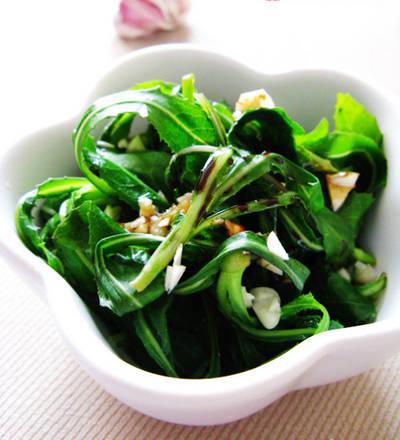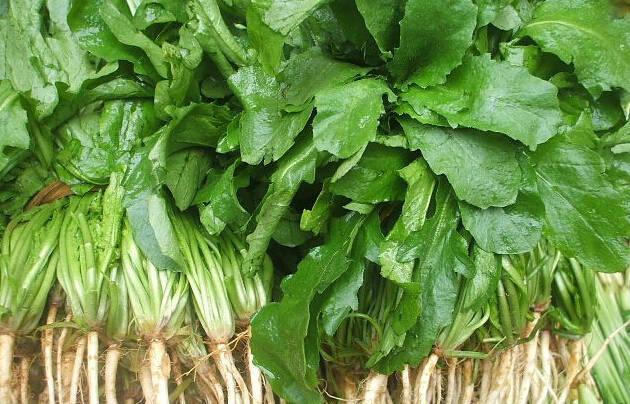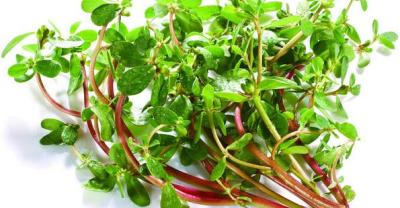Anti-cancer vegetables, doctors are scrambling to eat!
Portulaca oleracea can treat diabetes: Portulaca oleracea, also known as purslane, longevity dish. It is generally reddish brown with thick leaves and long Obovate, which is named because it looks like horse teeth. It contains protein, fat, methionine, riboflavin, ascorbic acid and other nutrients. Because there are more acid substances in it, you will feel a little sour when eating it.

The medicinal function of Rabdosia angustifolia is to clear heat and detoxify, cool blood and stop bleeding. Because it is rich in norepinephrine, it can promote insulin secretion from insulin gland, regulate the process of glucose metabolism, reduce blood glucose concentration and keep blood glucose constant, so it has a certain therapeutic effect on diabetes. In addition, it also contains an unsaturated fatty acid, which can inhibit the production of cholesterol and triglycerides and has a cardiovascular protective effect. It can be eaten in many ways, including stir-frying, cold dressing and stuffing after blanching. For example, scrambled eggs with horse teeth, steamed stuffed buns with horse teeth, or boiled garlic to relieve dysentery.
Platycodon grandiflorum anti-ulcer: Platycodon grandiflorum is also known as leafy vegetables and monk hats, which is what the Korean people call Doraji. The ends of its branches can produce small blue flowers. What we usually eat is Platycodon grandiflorum root, which has expectorant and antitussive, analgesic, antipyretic, sedative, hypoglycemic, anti-inflammatory, anti-ulcer, anti-tumor and bacteriostatic effects. Eating mother-in-law is good for the liver: mother-in-law, also known as dandelion, has been seen by many people in the wild. Its pollen contains vitamins and linoleic acid, while branches and leaves contain choline, amino acids and trace elements. The main functions of mother-in-law are heat-clearing and detoxification, detumescence and diuresis. It not only has a broad-spectrum antibacterial effect, but also can stimulate the immune function of the body, and achieve the role of cholagogic and liver protection. After blanching, it can eat raw, stir-fry or make soup; it can also be mixed with green tea, licorice, honey, etc., into a cup of mother-in-law Ding green tea that can clear away heat, detoxify and detumescence. Sowthistle can inhibit leukemia: the scientific name of bitter herb is sesame vegetable or chicory. The stem is yellowish white; the leaf is round-lanceolate, the surface is green, and the back is grayish green; the flowers are bright yellow and ligulate. Sun-dried sowthistle is rich in potassium, calcium, magnesium, phosphorus, sodium, iron, manganese, zinc, copper and other elements.

Sophora flavescens can clear heat, dryness and dampness, reduce swelling and discharge pus, remove stasis and detoxification, cool blood and stop bleeding. The ethanol extract of Sophora flavescens has inhibitory effect on acute lymphocytic leukemia, acute and chronic myeloid leukemia. The more common eating methods are minced garlic Mixed Bitter Vegetables, soy sauce mixed with sowthistle and so on.
Replenish deficiency and invigorate the spleen and eat shepherd's purse:

Shepherd's purse florescence in April to June, the field edge, people can often see dots of white shepherd's purse flower. Its main dietotherapy functions are cooling blood and stopping bleeding, tonifying deficiency and invigorating spleen, clearing heat and promoting diuresis. Spring to pick some shepherd's purse tender stems and leaves or overwintering buds, blanch after cold, dipping sauce, do soup, do stuffing, stir-fry food can, but also can boil into delicious shepherd's purse porridge.
Eat more amaranth in hot and dry days:

We generally eat relatively tender amaranth stems and leaves, which have the effects of clearing away heat and diuresis, detoxifying, nourishing yin and moistening dryness. In addition to stir-frying, cold salad and making soup, amaranth is also often used as stuffing. Such as cold salad, amaranth, vegetable dumplings and so on.
Water celery lowers blood pressure: water celery is also called water celery and river celery. Its stem is hollow, the leaves are triangular, the flowers are white, and they grow mainly in wet places, such as rivers and paddy fields. Water celery has the effects of heat-clearing and detoxification, moistening the lungs, invigorating the spleen and stomach, digestion and stagnation, diuresis, hemostasis, lowering blood pressure, anti-hepatitis, anti-arrhythmia and antibacterial. We often eat parsley mixed with peanut kernels. Prickle tender buds to tonify the kidney and nourish essence:

Thorn buds, also known as thorn dragon buds, mainly grow in bushes and forest clearings. Unlike other wild vegetables, it is not a herb, but a woody plant. Its bark is gray and covered with thick and hard prickles; the flowers are yellowish white; the fruit is berries, spherical and black. The edible part of thorn buds is mainly its buds, which can be used for tonifying qi, activating blood circulation, dispelling wind, promoting dampness, relieving pain, tonifying kidney and benefiting essence, etc.
Small garlic anti-atherosclerosis: small root garlic, also known as Allium macrostemon, garlic. Its stems and leaves look like garlic, but also have the taste of onions and garlic. Its function is to clear yang and transform qi, open chest and disperse knots, conduct qi stagnation, treat dysentery, inhibit the increase of ester peroxide in the blood of patients with hyperlipidemia, and prevent atherosclerosis. The main ways to eat are small roots of garlic mixed with tofu, or boil some small roots of garlic and white fungus porridge.
- Prev

Vegetables Salad, the fruit of healthy nutrition calories.
Did you make a healthy salad and add a lot of high-calorie ingredients? You can also make a salad if you sprinkle it on your green vegetables. Here, I.
- Next

Seven vegetables suitable for hypertension and diabetes at the same time
Cauliflower is rich in vitamin C, carotene, flavonoids, vitamin K, potassium, phosphorus, iron, calcium and other ingredients, helping to reduce estrogen in the human body.
Related
- Where is it suitable to grow horseradish in China? it is expected to see the middle altitude horseradish in Alishan.
- How to prevent tomato virus disease reasonably? (Control methods included)
- Many people like to plant towel gourd on the balcony. What are the main points of this method and management?
- What crops can chili peppers be mixed with?
- Fertilization techniques and matters needing attention in Tomato
- What are the grafting techniques for peach seedlings in spring?
- Harm and control methods of root swelling disease of Chinese cabbage
- What are the pests of sweet potatoes? How to prevent and cure it?
- Symptoms, causes and Control methods of navel Rot in Tomato
- The cause of "Cucumber rotten bibcock" in Farmers' planting Cucumber and its Control Plan

